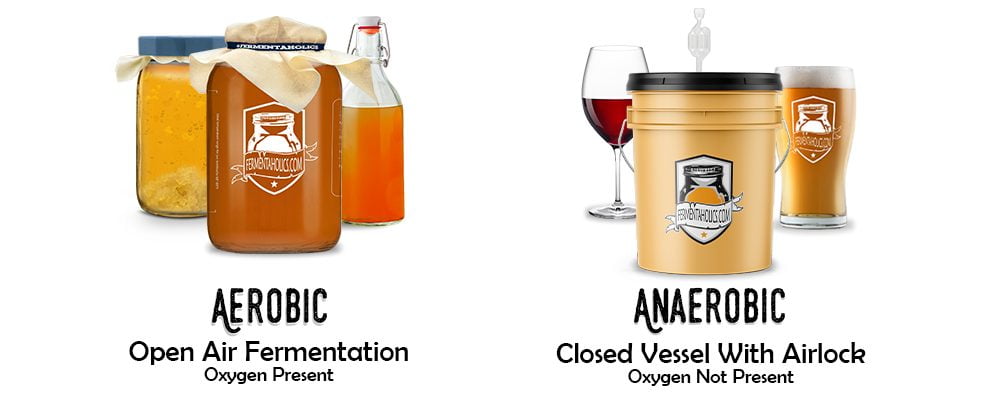
So you started your fermentation journey, and somewhere along the way, you’ve inevitably come across the terms aerobic and anaerobic fermentation. Before going over the difference, it’s important to note that while these terms are used across many subjects, this article covers how these terms are generally used in fermentation. What is the difference between aerobic and anaerobic?
In the simplest terms, the difference here is that anaerobic means without the presence of oxygen, while aerobic means with the presence of oxygen.

When you see these two terms used in fermentation, they tell us whether the fermentation process takes place with or without oxygen present. Furthermore, the term aerobic (respiration) in fermentation nearly always means open-air, and anaerobic in fermentation usually refers to fermentation taking place in a closed vessel with an airlock.

While this may be an oversimplification of the concept, simply knowing the fundamental differences here should get you through any hurdles. I hope this helped answer the question that led you here. Feel free to drop comments and questions in the comment section below.

The key difference lies in the presence or absence of oxygen. Aerobic fermentation happens in the presence of oxygen, whereas anaerobic fermentation takes place without oxygen.
Anaerobic fermentation typically produces ethanol, lactic acid, carbon dioxide (CO2), and energy, but the type and amount of byproducts can vary based on the microorganisms involved.
A “self-limiting” fermentation process refers to the phenomenon where the fermentation slows down and eventually stops once the sugar in the medium is used up, or the buildup of waste products becomes inhibitory.
Temperature can greatly impact the rate and efficiency of fermentation. Optimal temperature ranges vary by the type of yeast or bacteria, but extremes can slow down the process or potentially kill the microorganisms.
Oxygen can be harmful in certain types of fermentation because it can react with the byproducts, potentially leading to off-flavors or spoilage.
Carbon dioxide (CO2) is produced in fermentation as a byproduct of the metabolic process where yeast or bacteria convert sugars into other compounds.
The byproducts of fermentation, such as alcohols, acids, and esters, can significantly contribute to the flavor, aroma, and texture characteristics of fermented foods.
It is important to control conditions like temperature and oxygen availability during the fermentation process to ensure the health and activity of the microorganisms, which directly impacts the quality of the final product.
